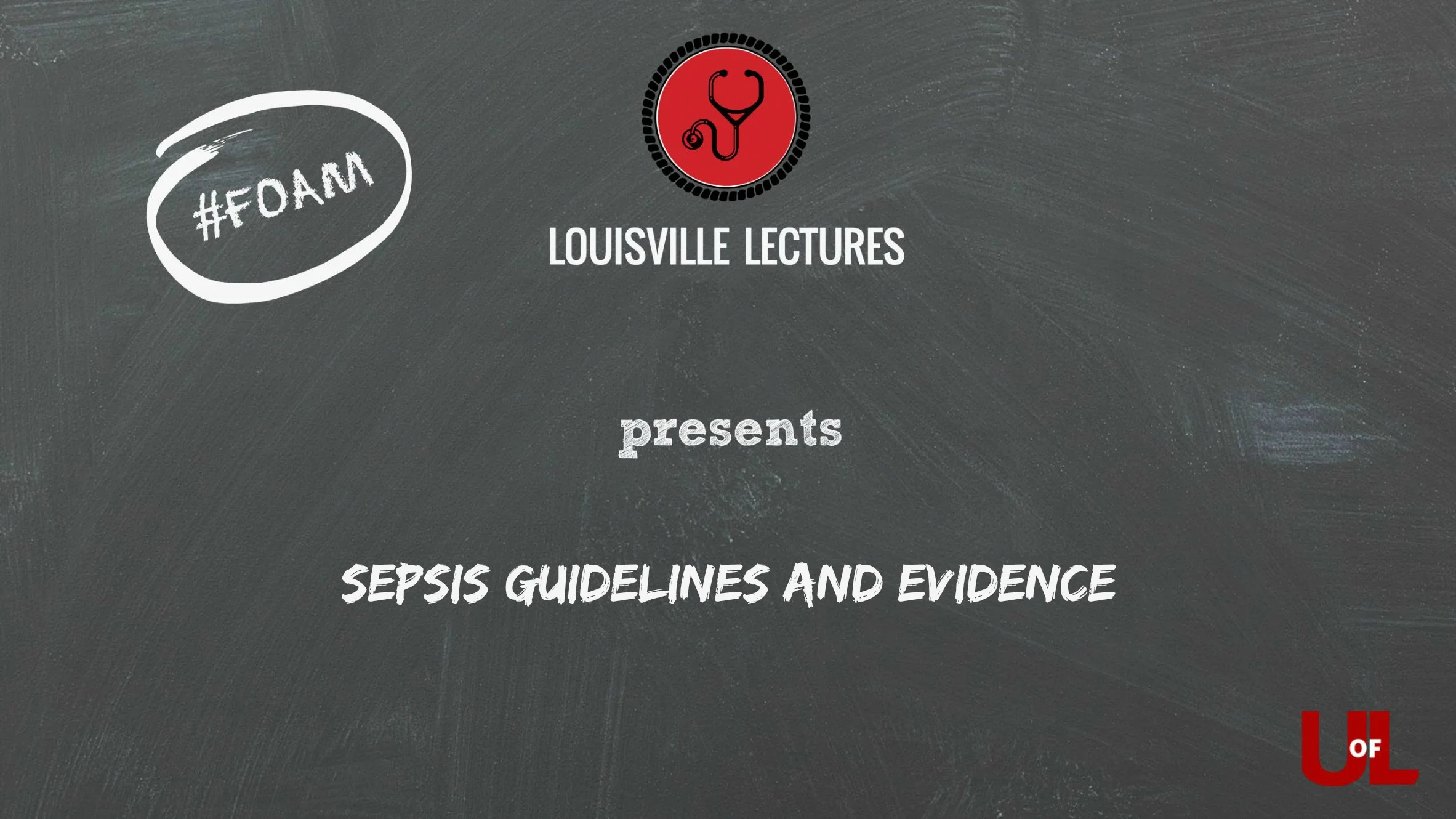In this lecture, Dr. Umair Gauhar reviews pleural anatomy, normal characteristics of pleural effusion and epidemiology of pleural effusions. He then delves into a thorough discussion of parapneumonic effusions (including various classification schemas) as well as treatment options both empiric antibiotic regimens and a comprehensive discussion thoracentesis. This is a must watch lecture for pulmonologists, intensivists, and internists!
Read More
Dr. Umair Gauhar discusses pleural fluid pressure, characteristics, epidemiology and pathophysiology of effusion. He spends a great deal of time teaching the approach to pleural effusion anatomy. This talk is background for Part Two which covers more of the clinical causes of non-malignant pleural effusion.
Read More
This week we have another lecture from Dr. Rodrigo Cavallazzi. Here he discusses the bundles of care that have come out of the Surviving Sepsis guidelines as well as the recent evidence concerning "Early Goal Directed Therapy" pioneered by Dr. Rivers. He also discusses recent updates to the Surviving Sepsis guidelines and some nuances for patients not responding to initial therapies.
Dr. Cavallazzi is an assistant professor of medicine at University of Louisville in the Pulmonary and Critical Care Department. He is a favorite of the residents and is heavily involved in the Community Acquired Pneumonia Organization (CAPO) research.
Some items in this lecture may have come from the lecturer’s personal academic files or have been cited in-line or at the end of the lecture. For more information, see our citation page.
You may see our blog archive for more lectures.
Disclaimers
©2015 LouisvilleLectures.org
Dr. Karem El Kersh describes basics of anatomy, components and indications for tracheostomy. Then he spends time covering when and how to change a trach as well as suggestions for troubleshooting common problems involving tracheostomies.
Dr. Rodrigo Cavallazzi discusses steps toward ventilator liberation including spontaneous breathing trial and other parameters to indicate readiness to wean. He then discusses strategies for weaning: optimizing fluid status, weaning protocols, sedation weaning, rehabilitation therapy.
Read More
Dr. Brian Beauerle covers the basics of cirrhosis including pathophysiology, symptoms and survival of patients with survival. He covers when and how to perform a paracentesis including interpretation of results. He discusses pharmacologic and dietary treatment of ascites and refractory ascites. He closes with complications of ascites including spontaneous bacterial peritonitis and hepatic hydrothorax.
Read More
Dr. Rodrigo Cavallazzi covers the assessment of volume responsiveness including the static exam as well as dynamic markers to aid with treatment of shock without administration of excessive fluids. He spends some time on shock definition and physiologic compensation before discussing physical exam and laboratory findings consistent with tissue ischemia. Then, he delves into methods of determining pre-load responsiveness.
Read More
Dr. Lorrel Brown returns to discuss tamponade cardiac physiology (including demystifying pulsus pardoxus). She continues to cover the differentiation of constrictive and restrictive cardiomyopathies. This action-packed lecture concludes with stress cardiomyopathy and HFpEF (heart failure with preserved ejection fraction).
Read More
Grand Rounds given by Internal Medicine Chairman, Dr. Jesse Roman. He covers the definition of interstitial lung disease as well as it's evaluation and management. He also spends time on idiopathic interstitial pneumonia and idiopathic pulmonary fibrosis.
Read More
Dr. Lorrel Brown covers the common (and less common) results of MI using cases. She includes papillary muscle rupture and mitral regurgitation, free wall rupture, ventricular septal defects, right ventricular infarct, pseudoaneurysm, aneurysm, pericarditis and bradyarrhythmias. Free Open Access Medical Education for Internal Medicine.
Read More


